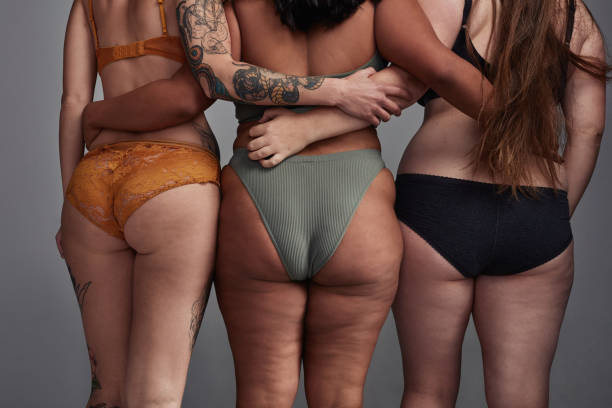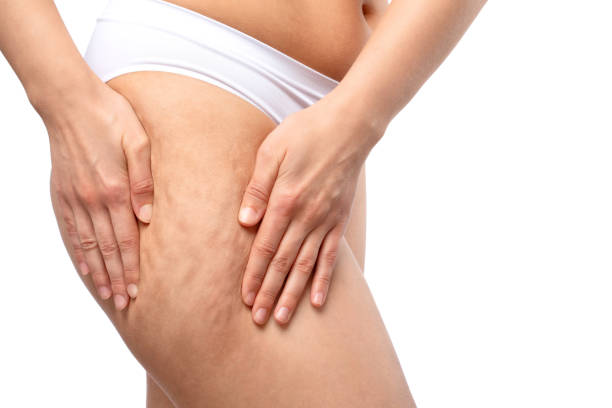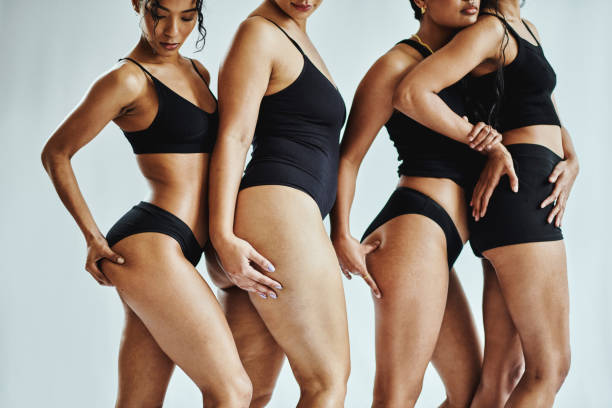Cellulite is a common skin condition that affects many people, causing a dimpled or lumpy appearance on the skin, most often on the thighs, hips, and buttocks. While it’s completely normal and nothing to be ashamed of, some people may feel self-conscious about it and wonder if tattoos can help cover cellulite. In this article, we’ll explore whether tattoos are an effective way to hide cellulite, how tattoos interact with cellulite, and what to consider if you’re thinking about using tattoos for this purpose.
Contents
What is Cellulite?

Cellulite is caused by the interaction between the connective tissue in the dermal layer of the skin and the layer of fat just below it. When fat cells push through the connective tissue, it creates a dimpled or lumpy appearance on the skin’s surface. It’s more common in women than men due to differences in how fat, muscle, and connective tissue are distributed in their bodies.
Causes of Cellulite
Several factors can contribute to the development of cellulite, including:
- Genetics: Your genetic makeup can determine your skin structure, skin texture, and body type, which can influence cellulite formation.
- Hormones: Hormonal changes, particularly involving estrogen, can play a significant role in the development of cellulite.
- Diet and Lifestyle: Poor diet, lack of exercise, and smoking can contribute to the appearance of cellulite.
- Age: As you age, your skin loses elasticity, which can make cellulite more noticeable.
How Tattoos Work
Tattoos involve injecting ink into the dermal layer of the skin using a needle. The ink particles remain in the skin and create a design or pattern. Because tattoos are placed in the dermis, which is deeper than the layer where cellulite occurs, they can potentially cover the appearance of cellulite on the skin’s surface.
Can Tattoos Cover Cellulite?

The short answer is yes, tattoos can help cover cellulite, but the effectiveness depends on several factors, including the design of the tattoo, the skill of the tattoo artist, and the severity of the cellulite.
Factors to Consider
- Tattoo Design: A well-designed tattoo can distract the eye and draw attention away from cellulite. Intricate patterns, bold designs, and darker colors can be more effective at covering cellulite than lighter or simpler designs.
- Tattoo Placement: The placement of the tattoo is crucial. It should be strategically placed over areas with cellulite to maximize coverage.
- Tattoo Artist’s Skill: The skill and experience of the tattoo artist play a significant role. An experienced artist can work with the natural contours of your body to create a design that effectively covers cellulite.
Realistic Expectations
While tattoos can help cover cellulite, it’s important to have realistic expectations. Tattoos will not completely eliminate the appearance of cellulite, but they can significantly reduce its visibility. The texture of the skin won’t change, but the design can help camouflage the unevenness.
Choosing the Right Tattoo
If you’re considering getting a tattoo to cover cellulite, here are some tips to help you choose the right design and artist:
Finding a Reputable Tattoo Artist
- Research: Look for tattoo artists who have experience with cover-up tattoos. Check their portfolios to see examples of their work.
- Consultation: Schedule a consultation to discuss your goals and see if the artist can create a design that will effectively cover your cellulite.
- Reviews: Read reviews from previous clients to get an idea of the artist’s skill and professionalism.
Tattoo Design Ideas
- Intricate Patterns: Detailed designs, such as mandalas, floral patterns, or tribal designs, can be very effective at covering cellulite.
- Bold Colors: Darker colors like black, navy, and deep greens can provide better coverage than lighter colors.
- Shading and Gradients: Using shading and gradients can create depth and dimension, helping to disguise the appearance of cellulite.
Tattoo Placement Tips
- Strategic Placement: Place the tattoo directly over areas with cellulite for maximum coverage.
- Size: Larger tattoos can cover more surface area and provide better camouflage.
- Flow with the Body: Choose a design that flows with the natural contours of your body for a more seamless look.
Caring for Your Tattoo
Proper aftercare is crucial for the healing process and the overall appearance of your tattoo. Follow these tips to ensure your tattoo heals well and looks great:
Aftercare Tips
- Keep It Clean: Wash your tattoo gently with mild soap and water. Avoid soaking it in water, such as in baths or pools, until it’s fully healed.
- Moisturize: Use a fragrance-free moisturizer to keep the tattooed area hydrated.
- Protect from Sunlight: Sun exposure can fade tattoos. Keep your tattoo covered or apply sunscreen once it’s healed.
- Follow Instructions: Your tattoo artist will provide specific aftercare instructions. Follow them closely to ensure the best results.
Pros and Cons of Using Tattoos to Cover Cellulite

Pros
- Aesthetic Appeal: Tattoos can add a beautiful design to your body, providing both aesthetic appeal and cellulite coverage.
- Confidence Boost: Covering cellulite with a tattoo can boost your confidence and make you feel more comfortable in your skin.
- Permanent Solution: Unlike other cellulite treatments, tattoos provide a permanent solution for covering cellulite.
Cons
- Pain: Getting a tattoo can be painful, especially in areas with more fat or closer to bones.
- Cost: High-quality tattoos by skilled artists can be expensive.
- Commitment: Tattoos are permanent, so it’s important to choose a design and placement that you’ll be happy with for life.
- Healing Time: Tattoos take time to heal, and you’ll need to follow aftercare instructions carefully to avoid complications.
Alternative Ways to Reduce the Appearance of Cellulite
If you’re not ready to commit to a tattoo, there are other ways to reduce the appearance of cellulite:
Exercise and Diet
- Regular Exercise: Strength training and cardio exercises can help tone the muscles and reduce the appearance of cellulite.
- Healthy Diet: Eating a balanced diet with plenty of fruits, vegetables, and lean proteins can help maintain a healthy weight and reduce cellulite.
Skincare Treatments
- Topical Creams: There are creams available that claim to reduce the appearance of cellulite. Look for products with ingredients like caffeine and retinol.
- Massage: Regular massages can improve circulation and help reduce the appearance of cellulite.
Medical Treatments
- Laser Therapy: Laser treatments can break down fat cells and stimulate collagen production, reducing the appearance of cellulite.
- Subcision: This is a minor surgical procedure where a needle is inserted under the skin to break up the fibrous bands causing cellulite.
Conclusion
While tattoos can be an effective way to cover cellulite, it’s important to have realistic expectations and choose the right design and artist. Tattoos can provide aesthetic appeal and boost your confidence, but they come with considerations such as pain, cost, and commitment. If you’re not ready for a tattoo, there are other ways to reduce the appearance of cellulite through exercise, diet, skincare treatments, and medical procedures. Whatever method you choose, remember that cellulite is a common and natural part of the body, and the most important thing is to feel comfortable and confident in your skin.





